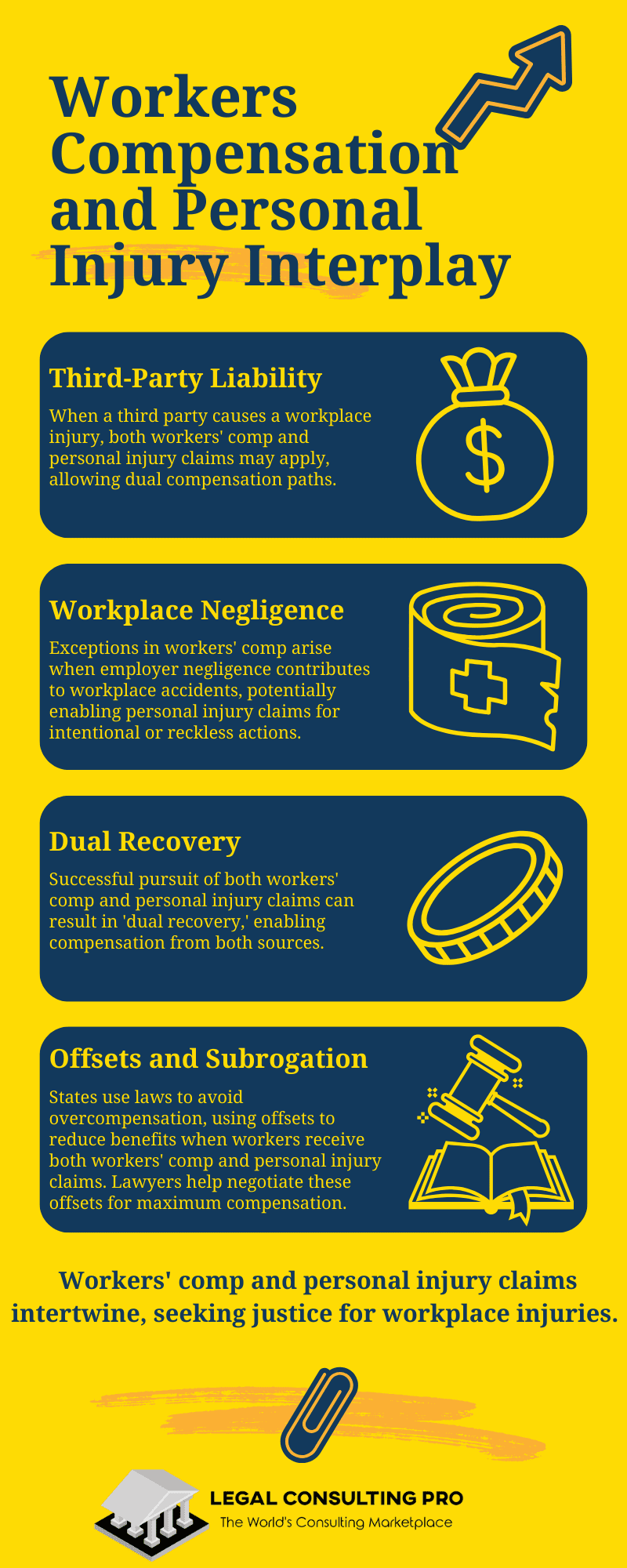Introduction
In the world of legal consulting, few areas can be as intricate and challenging to navigate as the interplay between workers’ compensation and personal injury claims. These two legal domains, while distinct, often overlap in cases involving workplace accidents and injuries. Workers’ compensation provides a safety net for employees injured on the job, offering financial support and medical care. On the other hand, personal injury claims allow individuals to seek compensation when someone else’s negligence causes their injuries, including accidents that occur in the workplace. This article explores the complex relationship between these two legal avenues, shedding light on when and how they intersect.
Legal Consulting Guide: Understanding Workers’ Compensation
Workers compensation is a system established to protect both employers and employees in the event of workplace injuries. This no-fault system ensures that injured employees receive compensation for medical expenses and a portion of their lost wages, regardless of who was at fault for the accident. In exchange for these benefits, employees generally forfeit their right to sue their employer for negligence.
Key Components of Workers Compensation:
Medical Coverage: Workers’ compensation typically covers all necessary medical expenses related to the workplace injury, including doctor’s visits, surgeries, medications, and rehabilitation.
- Temporary Disability Benefits: Employees unable to work while recovering from their injuries can receive temporary disability benefits, which often amount to a percentage of their regular wages.
- Permanent Disability Benefits: If the injury results in permanent impairment, workers may be eligible for ongoing disability benefits, the amount of which depends on the extent of their disability.
- Vocational Rehabilitation: In some cases, workers’ compensation provides vocational rehabilitation to help injured employees re-enter the workforce if they cannot return to their previous jobs due to their injuries.
To know in details about workers’ compensation, read: Navigating Permanent Disability: Legal Consulting Guide For Workers’ Compensation Lawyers
Understanding Personal Injury Claims
Personal injury claims, unlike workers’ compensation, are not limited to workplace accidents. They encompass a wide range of incidents where individuals sustain injuries due to someone else’s negligence or intentional actions. Personal injury cases can involve car accidents, slips and falls, medical malpractice, and yes, even workplace accidents when a third party, such as a manufacturer of faulty equipment, is liable for the injuries.
Key Components of Personal Injury Claims:
- Liability: To succeed in a personal injury claim, the injured party (plaintiff) must establish that someone else (defendant) was legally responsible for the injury. This often involves demonstrating negligence on the part of the defendant.
- Damages: Plaintiffs can seek compensation for a variety of damages, including medical expenses, lost wages, pain and suffering, emotional distress, and more. The amount of compensation depends on the extent of the injuries and the impact on the plaintiff’s life.
- Statute of Limitations: Personal injury claims have specific time limits within which they must be filed, known as the statute of limitations. These timeframes vary by state and the type of injury.
The Interplay Between Workers’ Compensation and Personal Injury Claims
While workers’ compensation and personal injury claims are distinct, there are situations where they intersect, creating complex legal scenarios. Understanding when and how these two areas overlap is crucial for individuals seeking full compensation for workplace injuries.
Third-Party Liability
A common scenario where both workers’ compensation and personal injury claims come into play is when a third party, not the employer, is responsible for the workplace injury. For example, if a delivery driver is injured in a car accident while on the job due to another driver’s negligence, the injured employee can file a workers’ compensation claim for medical expenses and lost wages and a personal injury claim against the at-fault driver.
Legal consulting experts play a pivotal role in these cases, helping injured workers pursue both avenues of compensation simultaneously. This can be a complex process, as it involves coordination between insurance companies, employers, and the at-fault third party.
Workplace Negligence
In some cases, an employer’s negligence may be a contributing factor to a workplace accident. While workers’ compensation typically prevents employees from suing their employers for negligence, there are exceptions. If an employer’s reckless or intentional actions lead to an employee’s injury, a personal injury claim against the employer may be viable.
Legal consulting experts must carefully assess the circumstances of workplace injury to determine whether a personal injury claim against the employer is feasible. This requires a deep understanding of labor laws and workplace safety regulations.
Dual Recovery
When an injured employee successfully pursues both a workers’ compensation claim and a personal injury claim, they may be eligible for what’s known as “dual recovery.” Dual recovery allows the injured party to receive compensation through both avenues.
However, legal consulting experts must be mindful of the potential for double-dipping, where an injured worker could receive compensation for the same damages from both claims. Ensuring a fair and ethical distribution of compensation is crucial in these cases.
Offsets and Subrogation
Many states have laws in place to prevent overcompensation when workers receive benefits from both workers’ compensation and personal injury claims. This often involves offsets, where the amount received through one avenue reduces the benefits available from the other.
Legal consulting experts play a pivotal role in negotiating these offsets and ensuring their clients receive the maximum allowable compensation.

Conclusion
Navigating the complex interplay between workers’ compensation and personal injury claims requires a deep understanding of both legal domains. Legal experts specializing in these areas play a crucial role in helping injured individuals secure the compensation they deserve. Whether it involves third-party liability, workplace negligence, or dual recovery, the expertise of legal consulting professionals is instrumental in ensuring that injured workers are not left financially burdened by workplace injuries.
As the legal landscape continues to evolve, staying informed about changes in workers’ compensation laws, personal injury regulations, and the intersection between the two is essential for legal professionals offering guidance and support to injured workers. The interplay between these two areas will continue to be a dynamic and challenging field, demanding expertise, and dedication from legal consulting pros to protect the rights and interests of those affected by workplace accidents and injuries.













































